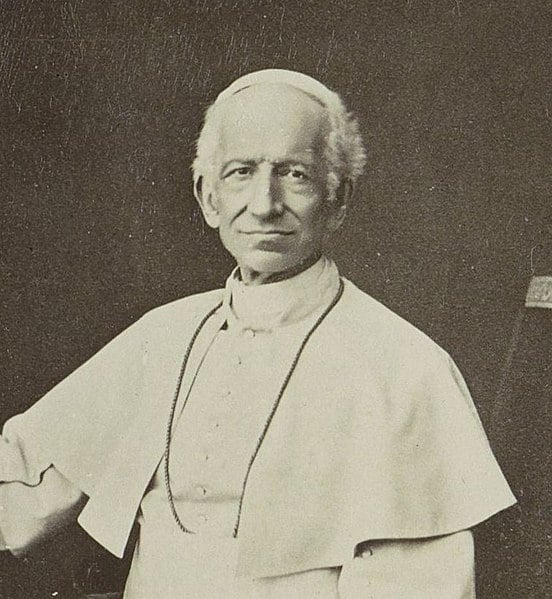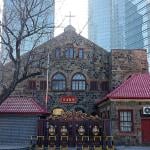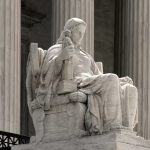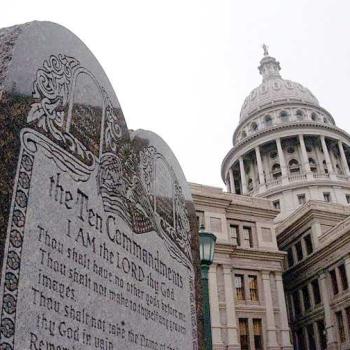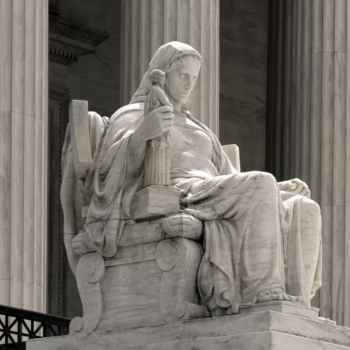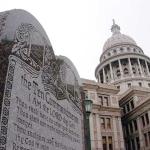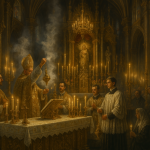Pope Leo XIII is in the news, more than a century after his reign ended. Matteo Bruni, director of the Vatican press office, told reporters that the new Pope Leo XIV’s choice of a name is a “direct recall of the social doctrine of the church and of the pope that initiated the modern social doctrine of the church.” And that would be Pope Leo XIII. Pope Leo XIV has since told his Cardinals that he plans to address the working-class struggles that were also a central concern of Pope Leo XIII.
Pope Leo XIII, who reigned from 1878 to 1903, is best known for his 1891 encyclical Rerum Novarum, sometimes called in English “On the Condition of the Working Classes.” By 1891, the Industrial Revolution had created horrific working conditions for millions of people. Workers had no rights or legal protections, such as wage, hour, or occupational safety laws. People worked as long as they were told for starvation wages, often in dangerous conditions. The labor union movement was very new and hadn’t yet had much of an impact. In the encyclical the Holy Father wrote,
Hence, by degrees it has come to pass that working men have been surrendered, isolated and helpless, to the hardheartedness of employers and the greed of unchecked competition. The mischief has been increased by rapacious usury, which, although more than once condemned by the Church, is nevertheless, under a different guise, but with like injustice, still practiced by covetous and grasping men. To this must be added that the hiring of labor and the conduct of trade are concentrated in the hands of comparatively few; so that a small number of very rich men have been able to lay upon the teeming masses of the laboring poor a yoke little better than that of slavery itself.
There is an excellent summary of the Rerum Novarum here. It’s by CAPP-USA, the U.S. arm of the Vatican-based FCAPP (Fondazione Centesimus Annus Pro Pontifice).
Pope Leo XIII and the Challenge of Changing Times
In the years before Pope Leo XIII began his rule, the Church was struggling with a surge of anticlericalism. Even in a great many primarily Catholic countries, people wanted the Church to stay in its religion lane and out of the way of the rising tides of science and liberal democracy. The anticlericalism was a major headache for Leo XIII’s predecessor, Pope Pius IX, who reigned from 1846 to 1878. Pius IX started out as an innovative reformer. But by the end of his long papacy, he had become a hardline, anti-modern reactionary. In 1864 Pope Pius IX issued a still-controversial encyclical called the Syllabus Errorum, or “The Syllabus of Errors.” The Syllabus is a list of beliefs that were widely held in the 19th century, but which must be firmly rejected, per Pius IX. Although the Syllabus has its defenders to this day, some have called it an attempt by the Church to burn all bridges to the modern world.
Among many other things, Pius IX defended the Catholic Church as the final arbiter of all truths, including scientific ones. Governments erred if they allowed citizens to embrace religions other than Catholicism. The central doctrine of liberal democracy — that the people are the source of all political power and may decide for themselves how their nation should be governed — also was rejected. The very last proposition to be rejected was “The Roman Pontiff can, and ought to, reconcile himself, and come to terms with progress, liberalism and modern civilization.” I guess not. The Syllabus caused a huge rift in the Church between liberals and conservatives. It didn’t exactly endear the Church to non-Catholics, either.
Pius IX also convened the First Ecumenical Council of the Vatican, known commonly as Vatican I, in 1869. The purpose of the Council was to clarify Catholic doctrine in light of modern times. In attendance were 700 bishops. A great many topics were discussed, but the matter of papal infallibility came to dominate discussions. Although the bishops all accepted the doctrine, there was much disagreement over exactly what it meant and how it functioned in the world. The Council did manage to settle on a doctrine that, I understand, still stands, but the process of doing so involved considerable rancor and fireworks, so to speak. The Council was suspended in 1870 when the Franco-Prussian War began. And shortly after that, Rome fell — to Italian troops.
Rome had been part of the Papal States, a conglomeration of territories, mostly in central Italy, that had been under the direct sovereign rule of the popes since 756. By 1860, however, most of the Papal States had been absorbed into the Kingdom of Italy. All that was left for the Pope to rule was a region called Lazio, which included Rome. Then Lazio, and Rome, were captured by Italian troops in 1870 and incorporated into the Kingdom of Italy. Rome became the capital of Italy in 1871. This began a period now called “prisoner in the Vatican,” in which Pius IX and succeeding Popes, including Leo XIII, confined themselves to the Apostolic Palace and adjacent buildings on Vatican Hill. Their legal status — were they citizens of Italy, or not? — was disputed. The popes did not consider it appropriate for them to be subjects of any temporal power. Eventually, in 1929, the sovereign city-state of Vatical City was carved out of Rome and given to the popes to rule.
Leo XIII as Pope
Not unlike the former Cardinal Robert Prevost, Cardinal Gioacchino Pecci was something of a surprise choice to become Pope. Cardinal Pecci was born near Rome in 1810, the sixth of seven sons of Count Lodovico Pecci and his wife Anna Prosperi-Buzi. He was an outstanding student, and in 1836 he received his doctorates in theology and in civil and Canon Law. He was ordained a priest in 1837. He was made a Cardinal in 1853. But according to Eamon Duffy, author of Saints & Sinners: The History of the Popes (Yale University Press, 2016), at the time of the Conclave of 1878 “Pecci was virtually unknown outside Italy. He was not a member of the Curia, and had been bishop of the relatively obscure see of Perugia since 1846.” Vatican politics seemed stacked against him. He remained in relative obscurity until he became Pope.
Eamon Duffy believes one of the reasons for Cardinal Pecci’s election were some pastoral letters he had published that “spoke positively about the advance of science and society” and “argued for reconciliation between the Church and the positive aspects of modern culture.” The cardinals were looking for a change from Pope Pius IX. “Many of the cardinals felt that the apocalyptic denunciations of the world and political intransigence of Pio Nino [a nickname for Pius IX] had painted the church into a corner.”
So it was that Leo XIII guided the Catholic Church through a time when the world seemed in flux. Per Eamon Duffy, “From his first day the new Pope displayed an astonishing sure-footedness in walking a tightrope, restoring the international prestige of the papacy without abandoning any of its religious claims.” Be advised that Leo XIII was, in most matters, far from a trail-blazing liberal. In matters of Catholic doctrine and the threats of modern times he was quite conservative, in fact. But he abandoned Pius IX’s “shrill tone and confrontational manner,” quoting Duffy. The change was widely noted, and it was welcomed. And if you’d like to read more about the papacy of Leo XIII, I do recommend Duffy’s book Saints and Sinners. It’s papal history without the usual hagiography. The section on Leo XIII describes how he came to be reluctantly reconciled with such newfangled things as republican governments, freedom of the press, and religious tolerance. He perhaps was the first Pope who fully accepted the reality that monarchies were on their way out and the Renaissance was not coming back.
The Father of Catholic Social Justice
The Catholic Church has a centuries-old tradition of caring for the poor, as Jesus taught. But the Church had not been given to addressing societal problems that created poverty. In the late 19th century the Church was locked into reactionary suspicion of any plans to transform society, especially plans that smacked of Marxism. But many devout Christians, both Catholic and Protestant, saw how the Industrial Revolution and unregulated capitalist economies had created exploitation and hardship on an unprecedented scale. To be true to the teachings of Jesus, some said, the Catholic Church must move beyond giving alms. It must address a Christian vision of the whole of society.
In 1885 a French industrialist and Catholic named Lucien Harmel began organizing workers’ pilgrimages to Rome to enlist the help of the Pope in workers’ rights. The pilgrims exposed the Pope to the harsh reality of their lives. They also persuaded him that, perhaps, democracy and the Church could work together for common good. He perhaps also wanted to get ahead of the Marxists on working-class issues. And so Pope Leo XIII released his encyclical Rerum Novarum.
As social analysis the encyclical was not at all groundbreaking. Its traditional language made it seem timid compared to other rhetoric of the times. But for a Pope to challenge unrestricted capitalism and champion the rights of workers was downright revolutionary. We are used to Popes addressing social justice issues now, but they didn’t before Pope Leo XIII. And this was a breakthrough that, finally, helped the Church deal with the modern world.
